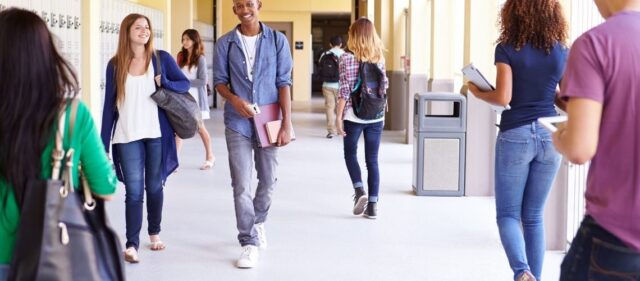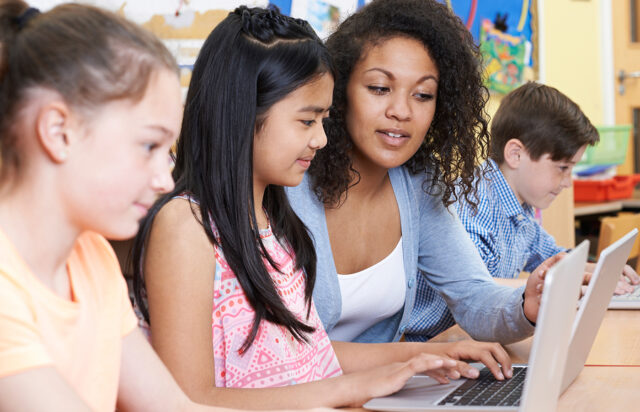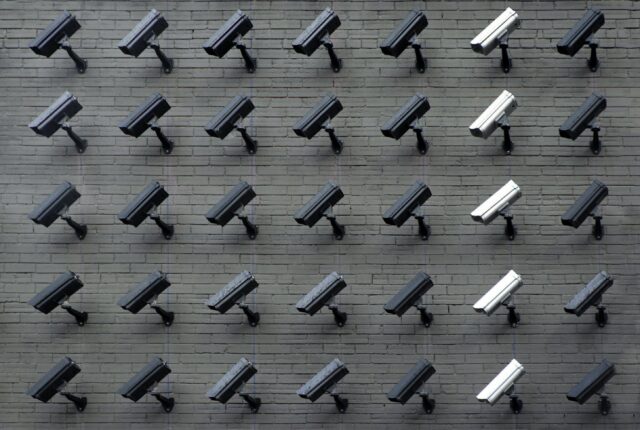
Are you keeping your student safe? It’s the number one question on parents’ minds – schools need to go above and beyond to protect their students. We’ll take a look at what they are doing to ensure student security and how parents can help. Let’s get started!
Implementation of Security Laws in Schools
As a result of numerous school shootings, many states are now implementing Alyssa’s Law to better protect students. Alyssa’s Law was named for the little girl who was tragically killed during the shooting at Marjory Stoneman Douglas High School in Parkland, Florida, in 2018.
The law requires all public schools in the state to install silent panic alarms that, when triggered, notify first responders that there is an active shooter or another emergency on campus and ensure a timely response.
The implementation of Alyssa’s Law is an effort to ensure that their staff and students have long-term peace of mind. As part of this effort, proper training must be provided to faculty so they understand how to respond when a silent alarm is triggered or other security measures are put into place.
Additionally, certain measures should be taken by schools to improve communication with local first responders and broaden methods of alerting authorities about the emergency.
Types of Student Security Measures
In light of the increased threats of violence on campuses, many schools are implementing proactive measures to help protect their students. As they are often responsible for ensuring the safety of their students and faculty, they have adopted a number of technologies to increase system security.

- Surveillance cameras and metal detectors installed in entryways
- Keycard access systems and facial recognition systems that limit students’ access to certain areas or track who visits certain premises
- School safety officers who monitor activity throughout the campuses
- Threat assessment software allows staff to quickly assess various warning signs and take action accordingly
Other common student security measures include:
- Multi-factor authentication procedures, such as password changes and using digital keys
- Limiting access control into certain rooms or buildings dependent upon student identification badges
- Actively teaching safety lessons by informing their student population on what types of situations should be reported and discussed
- Active shooter response training sessions
The goal is to ensure a safe learning environment while preparing young people for any eventuality they may encounter in everyday life.
Implementing Security Measures in Schools
They have implemented a variety of measures in order to ensure the safety of their students and staff. Some of the most common measures being taken include:

- Installing security cameras in key areas, such as hallways, classrooms, and cafeterias
- Increasing the presence of uniformed security personnel
- Implementing rigorous access control policies
- Monitoring student behaviors with video surveillance
- Establishing rigorous background checks for new staff and volunteers
- Enforcing safe ridership policies on school buses
- Conducting emergency drills to prepare staff and students for difficult situations.
These tactics can help them create a safer learning environment while also deterring unwanted visitors or potential violence. In addition to these measures, many of them are also implementing programs designed to promote awareness around important safety topics and connect students with mental health services. These efforts can help foster a stronger sense of community in which everyone is invested in student safety.
The Role of Technology in Student Security
As technology advances, schools are finding more ways to increase student safety and security. Today, digital tools are used to streamline the security process, from biometric scanners to facial recognition systems that identify unregistered or suspicious visitors. With the help of technology, educational institutions can have full control over who enters and leaves the premises.
They are also leveraging data analytics and machine learning algorithms to detect suspicious activity in real time. With automated alerts sent directly to administration and staff, potential threats can be addressed before they become a larger problem. Other technological features like virtual ID badges can quickly identify children on campus and instantly find their guardians or teacher through location tracking.

In addition, surveillance cameras offer a great way to monitor student safety during class time or recess hours. Many systems today come with facial recognition technology that provides automatic alerting capabilities when a registered visitor appears in the camera’s viewfinder. This helps them avoid unnecessary manual checks for oversight and documentation of dangerous activities such as bullying or harassment.
Overall, technological advances have provided greater opportunities for schools to improve their security systems and ensure student safety on campus. By incorporating these digital tools into existing policies, schools can create an environment where students feel safe and secure while pursuing their educational careers.
The Impact of Security Measures on Student Outcomes
The impact of these measures on student outcomes is an important area of research for schools across the country. With increasing concerns around school shootings, schools must now consider how their security measures influence both the safety and educational environment of their students.
By understanding current student opinions on the effectiveness of these measures, we can better prepare our schools to effectively protect our student population while also fostering positive learning environments.
Studies have found that accessibility restrictions, such as locked doors or limitations in the use of outdoor areas, can impact a student’s ability to move about the building or access school grounds easily for exercise and recreation. These restrictions also have an effect on educational outcomes by limiting social engagement between students, limiting instructional time, and disrupting class activities.
Security technology has had an equally-sized impact on student outcomes as these systems limit communication with friends in other grades or reduce opportunities for extracurricular activities due to long lines for ID scanning purposes and other inconveniences related to their use.
The introduction of cameras into learning spaces has been shown to create a sense of unease that restricts freedom of movement in classrooms and can derail learning activities that require movement or are more interactive in nature (e.g., lab work).
Though many of them are using more sophisticated security tools such as metal detectors and facial recognition systems, there is still a lack of data on how significantly they affect student performance.
As such, more research should be done in order to understand the implications these systems have on student safety and academic achievement so that informed decisions regarding implementation can be made by educational institutions.
Conclusion
As their administrations continue to work to provide a safe learning environment for students, it is important to remember that creating a safe and secure environment involves everyone taking steps and making efforts.
Security systems, surveillance camera networks, and active shooter safety protocols are some of the measures that schools are taking to ensure they are as well-equipped as possible to handle any threat of violence or other concerns.
Taking these important steps along with utilizing appropriate technology weapons provide a strong platform for successful safety initiatives within schools.













